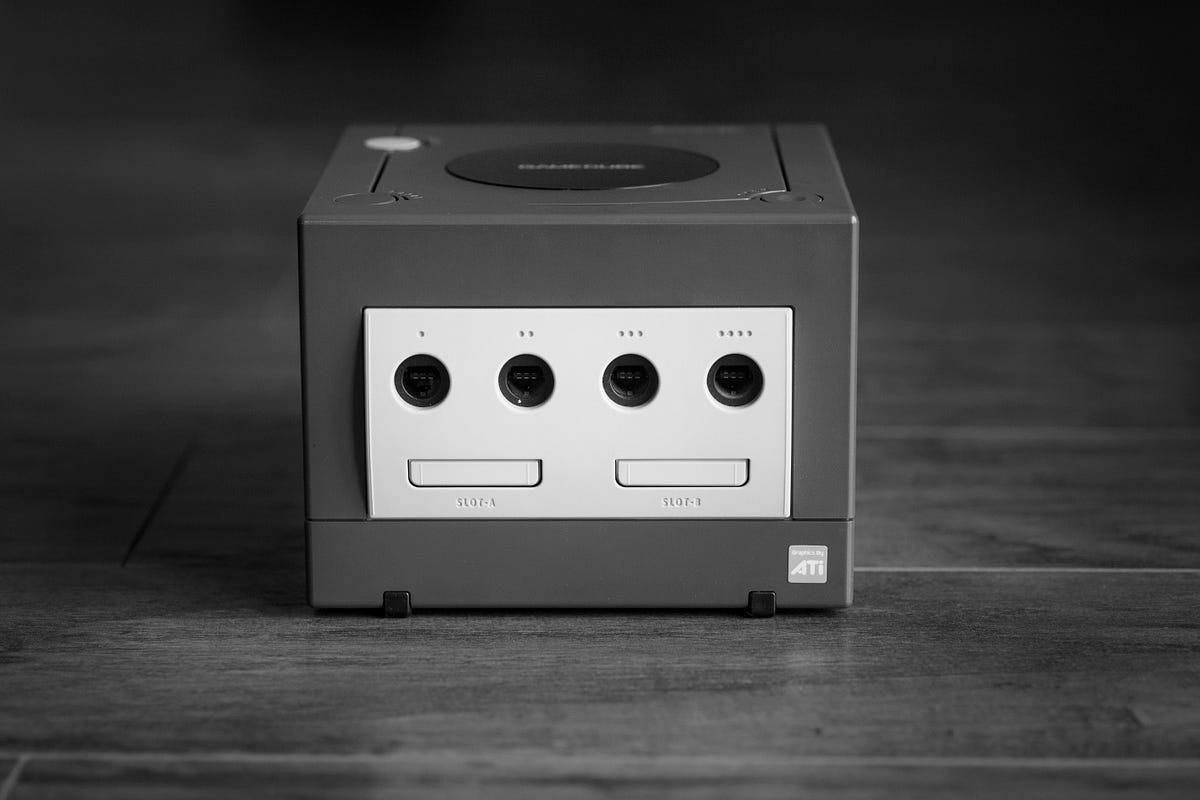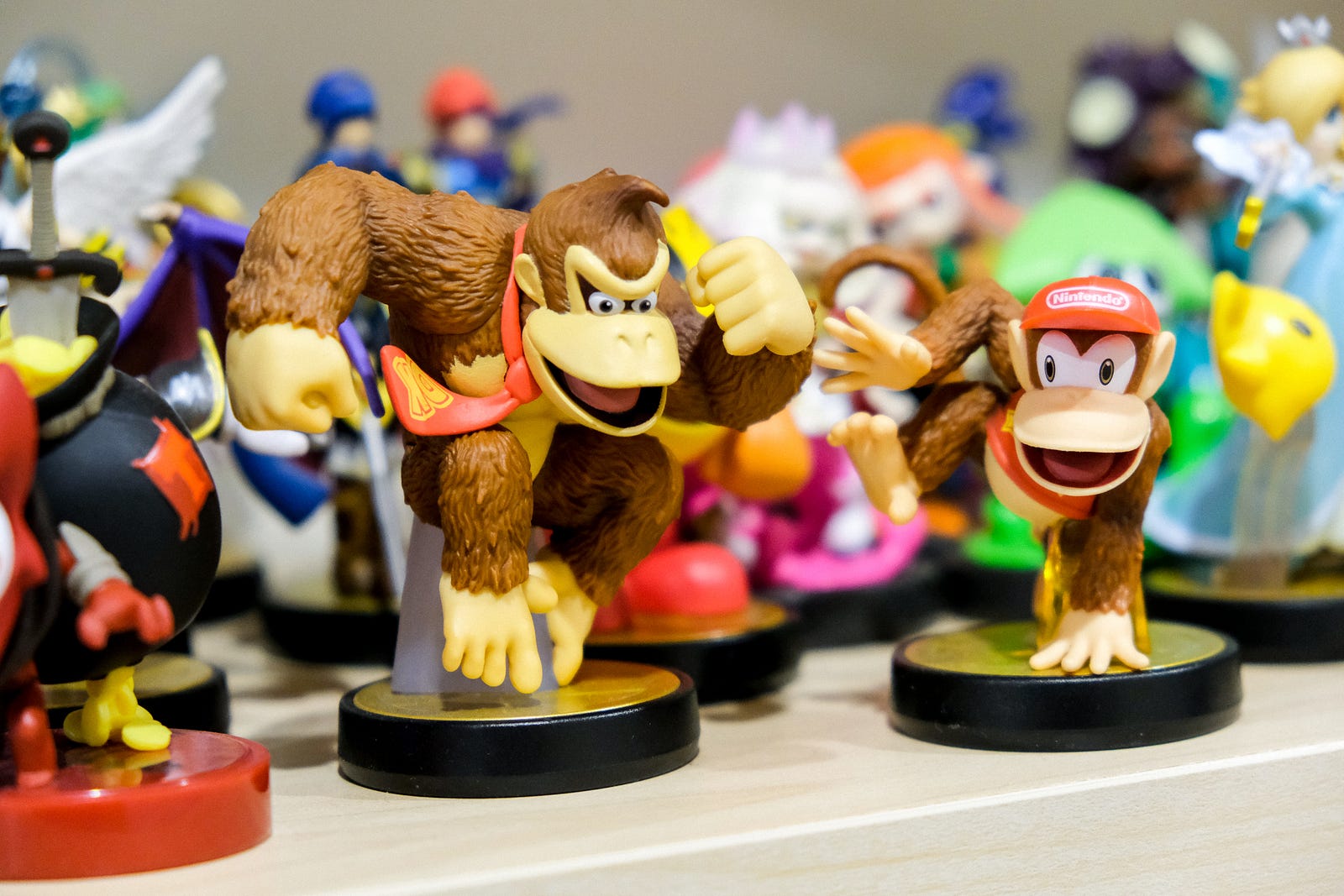Video games have long had a bad reputation, especially when it comes to kids. Playing video games is — rightfully — considered screen time. If we spend too long on a screen for any reason, there are undeniably negative effects. I’ve seen my own kids turn from super-happy, “Mom’s the best!” angels into ball-of-fury, “How DARE you!” monsters at the mere mention of turning off the game.
HOWEVER.
I actually am a proponent of video games. I grew up playing Atari, Nintendo, and Super Nintendo. In college, my best friends and I spent hours on the GameCube (remember the GameCube?!).

Post graduation, I got myself a Wii. Most recently, I finally pandemic-bought the Switch.
I am a child of Nintendo, and I also have rich and satisfying relationships, a teaching credential and a master’s degree, and a fulfilling career. Video games did not lead me to become more violent, withdrawn, or zombielike.
Of course I have to state a few caveats.
Like everything, the type of game matters, there have to be time limits, and there’s the potential for addiction. We have to be observant and vigilant.
The detriments will be greater and the benefits fewer or less pronounced if there’s no caring adult to support the life skills that the games have the potential to help develop. Kids will likely get some benefit passively, but having a coach by their sides is helpful.
Why I Introduced Video Games to My Kids

When I was a kid, some of my very best memories are from the times spent sitting on my daybed next to my mom and/or dad, playing one of the three Super Mario games (yeah even that weirdo second one — is that anyone’s favorite?), Donkey Kong, Marble Madness, Double Dragon, Battletoads, Uniracers… I could go on. Some games have led to some of the deepest belly laughs, even into my adulthood. One of my best friends and I still crack up at memories of her love/hate relationship with a game called Claymates.
Part of my motivation for buying the Switch was to bring some of the joy I experienced as a child to my own family. At the time, I wasn’t thinking about the SEL benefits, honestly. I was just remembering the bonding moments from my childhood.
As I watched my oldest kiddo work through frustration while learning the controls, experience the satisfaction of completing a difficult level, and help his little sister figure out how to play the game, I realized that there is so much more potential here than just creating happy memories.
There are many ways that video games support my kids’ social and emotional development (see CASEL’s SEL framework for more information about each SEL competency).
Recognizing and working through frustration
As I mentioned, it didn’t take long for my son to experience the frustration that comes with learning a video game. He hadn’t ever used a Switch controller, and he’d never played the game we were trying out. The controls in the game were super awkward, and the characters didn’t move intuitively. At one point, I had to stop him from throwing the brand-new controller (which took a lot of self-management on my part!!) and try to guide him through the frustration. It wasn’t easy, and he ended up having to leave the room. My kiddo has some big emotions.
When we tried to play again, we had a talk first about how to breathe through the frustration when things weren’t going the way he wanted them to. We talked about how throwing the controller is not only a surefire way to get in trouble, but is also not a productive way to deal with frustration.
I also reminded him that this is all new to him. Like any new skill, he wasn’t going to be very good at first. It was going to take time, patience, and practice. As we move forward, it’ll be important for me to help him notice when his body is showing the signs of frustration. If he can be self-aware enough to know he’s getting to that controller-throwing point, we can work through it together. Eventually, he’ll be able to work through it on his own.
Being a gracious winner and a gracious loser

On Monday nights after dinner, we all play Mario Kart. I have played Mario Kart for pretty much ever. I’m not the best, but I’m the best in my family for sure (that’s not hard, I promise — don’t tell my husband I said that). I’m also really competitive. I don’t go easy on them. This may not be the gentlest parenting and it may even be the wrong thing to do. But it has led to some learning around how to lose (and how to win) graciously. It was hard for Z at first, but over time he’s begun to have fun just playing.
He laughs when he does so miserably he’s in 11th or 12th place. He’s discovered that you get the better mystery boxes when you’re not winning (I may have whined about that a few times), which makes it more fun. He watches me win with a small “woo!” or raised hands to celebrate my victory quietly, and then help my youngest finish the race. Once in a (long) while, someone else will win and I model gracious losing with a handshake and smile.
Winning and losing, in my house, elicit emotional reactions that sit squarely on opposite ends of the spectrum. Either extreme is bound to make the other players in the room feel badly. Learning how to recognize and manage those emotions and then self-regulate for the sake of everyone else is super important.
My four-year-old daughter (understandably) still struggles with this — hers is a longer journey. I think our collective game time is a good way for her to see the rest of us model, and to be gently guided by us to discover her own methods of self-management.
Lending a hand
Sometimes, I just hang out with the two of them while they’re playing together, ready to help if needed. What I love most in these moments is when Z, my older kid, is able to calmly help his little sister understand what to do. When she figures it out, he is genuinely happy for her and celebrates alongside her. It’s really a lovely thing to witness. Especially when the preceding 15 minutes were filled with whining and arguing about who would be the main game controller. I mean, it isn’t all roses and butterflies.
Making good choices
Almost every game has decision points throughout, and it’s great practice for making the better choice in a no-risk environment. They can see the consequences of their actions one way or another. If it wasn’t the right choice, they get a second chance.
While this type of decision making definitely occurs in video games, it’s really the real-life decisions about their game play that matter the most.
We set screen time limits on the kids each day, and they get to decide how to use it. Many days, they use it watching shows. Z watches these super annoying Minecraft YouTubers, and L watches Daniel Tiger or Word Party. They forget some days that their screen time could also be used playing the Switch. On those days, if Z sees me having some Switch time to myself, he gets all upset and says it’s not fair that I get to play and he doesn’t.
I default to “I’m an adult, I can do what I want,” but then scale that back and try to remind him of the choices he always has to make. With a limited amount of time, he needs to make the choice that he’ll be happiest with. He has full control (within reason) over how he spends that time. He needs to take responsibility for the decisions that he’s made. If he wants to spend it watching other people play games and yell-talk in exaggeratedly excited tones about what it is they’re doing, instead of playing games himself, that’s 100% up to him. Usually that leads to a couple days of spending that time playing video games instead.
The other choice that the kids have to make regarding video games is the way they’ll act when time’s up. This is another one that takes patience and guidance on my part, and I do my best not to lose my cool. If they go nuts when it’s time to stop playing, they lose out on playing, for however many minutes it takes them to chill out, the next time we play.
There are all kinds of ways to weave in SEL skill development throughout the day, and often we don’t even know we’re doing it. I wasn’t setting out to intentionally help my kids develop their skills through video games — I just realized it was happening when I was trying to think of blog topics one day!

